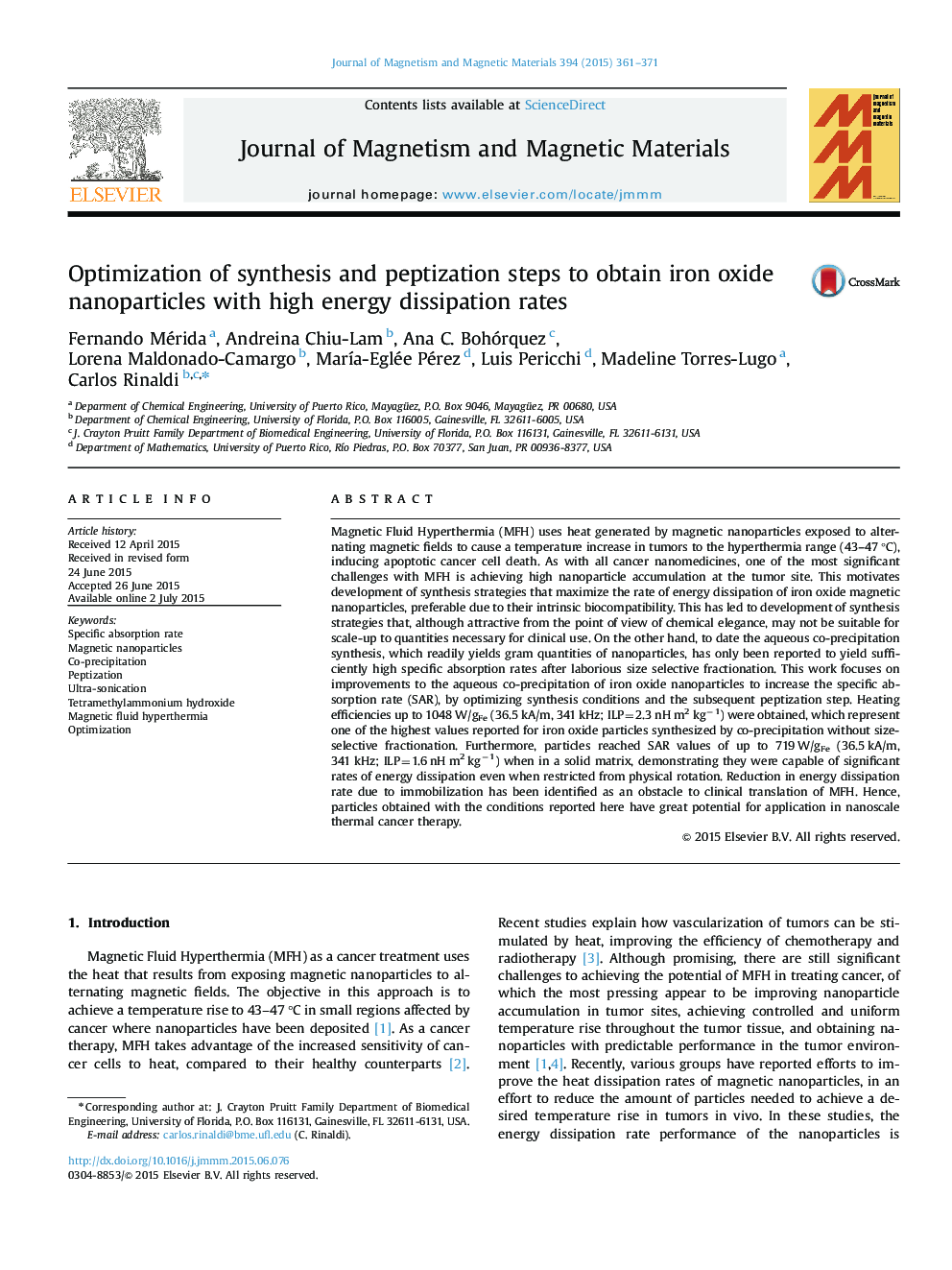| کد مقاله | کد نشریه | سال انتشار | مقاله انگلیسی | نسخه تمام متن |
|---|---|---|---|---|
| 1799004 | 1524827 | 2015 | 11 صفحه PDF | دانلود رایگان |
• Optimization of synthesis and peptization of magnetic nanoparticles is achieved.
• A simple co-precipitation method yielding high SAR values is presented.
• Ultra-sonication during the peptization step improves particle dispersion.
• High SAR values without post-synthesis fractionations are consistently achieved.
• SAR remained high even for samples with restricted particle rotation.
Magnetic Fluid Hyperthermia (MFH) uses heat generated by magnetic nanoparticles exposed to alternating magnetic fields to cause a temperature increase in tumors to the hyperthermia range (43–47 °C), inducing apoptotic cancer cell death. As with all cancer nanomedicines, one of the most significant challenges with MFH is achieving high nanoparticle accumulation at the tumor site. This motivates development of synthesis strategies that maximize the rate of energy dissipation of iron oxide magnetic nanoparticles, preferable due to their intrinsic biocompatibility. This has led to development of synthesis strategies that, although attractive from the point of view of chemical elegance, may not be suitable for scale-up to quantities necessary for clinical use. On the other hand, to date the aqueous co-precipitation synthesis, which readily yields gram quantities of nanoparticles, has only been reported to yield sufficiently high specific absorption rates after laborious size selective fractionation. This work focuses on improvements to the aqueous co-precipitation of iron oxide nanoparticles to increase the specific absorption rate (SAR), by optimizing synthesis conditions and the subsequent peptization step. Heating efficiencies up to 1048 W/gFe (36.5 kA/m, 341 kHz; ILP=2.3 nH m2 kg−1) were obtained, which represent one of the highest values reported for iron oxide particles synthesized by co-precipitation without size-selective fractionation. Furthermore, particles reached SAR values of up to 719 W/gFe (36.5 kA/m, 341 kHz; ILP=1.6 nH m2 kg−1) when in a solid matrix, demonstrating they were capable of significant rates of energy dissipation even when restricted from physical rotation. Reduction in energy dissipation rate due to immobilization has been identified as an obstacle to clinical translation of MFH. Hence, particles obtained with the conditions reported here have great potential for application in nanoscale thermal cancer therapy.
Journal: Journal of Magnetism and Magnetic Materials - Volume 394, 15 November 2015, Pages 361–371
